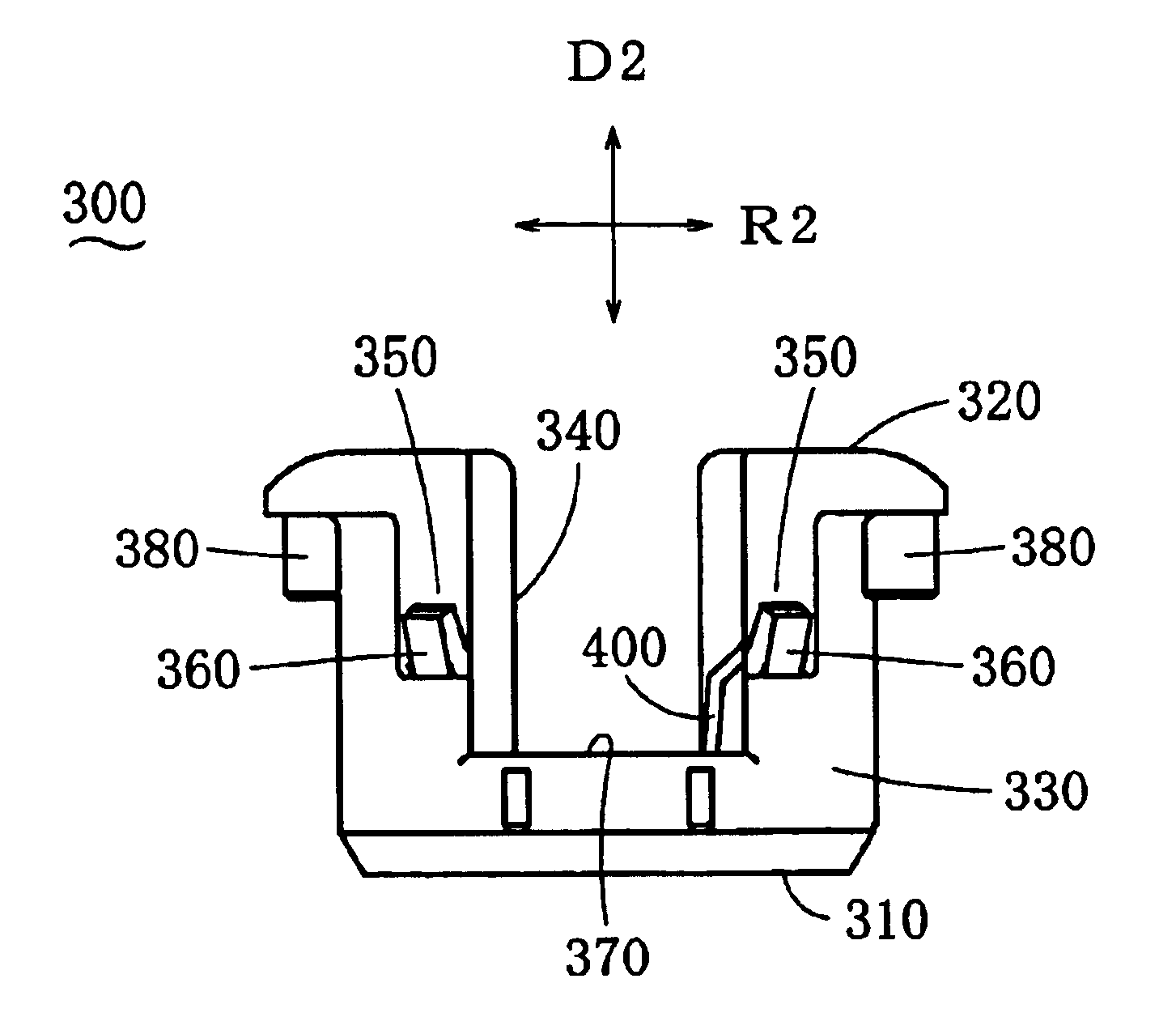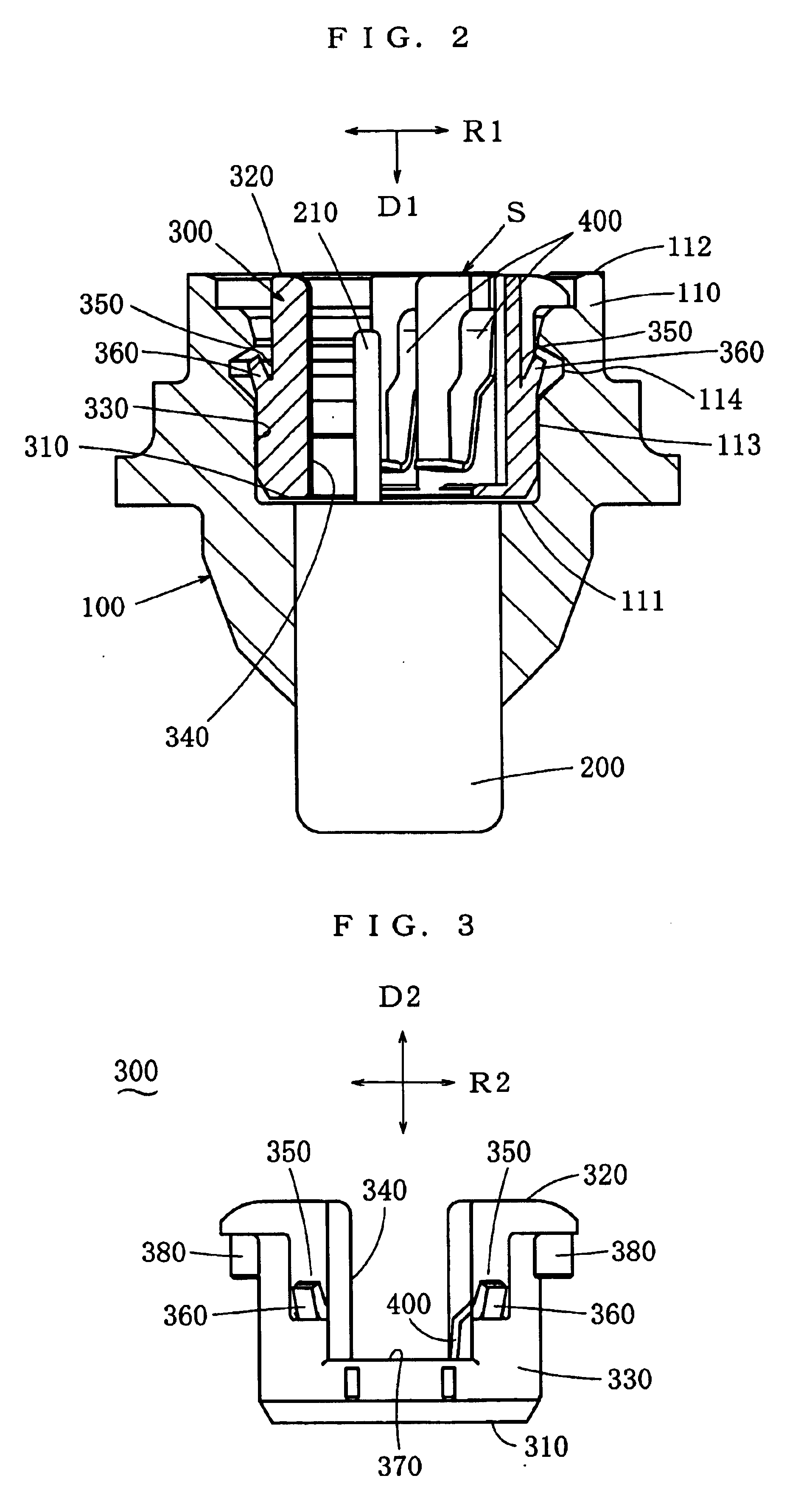Shunt for squib having an improved securing mechanism
a technology of squib and shunt, which is applied in the direction of coupling device connection, pedestrian/occupant safety arrangement, vehicular safety arrangement, etc., can solve the problems of inadvertent disconnection of the shunt from the inflator, reduce the depth of the fitting of the swelled part into the fitting concave, and provide sufficient force, so as to reduce the force required to insert the shunt into the socket and enhance the workability of fitting th
- Summary
- Abstract
- Description
- Claims
- Application Information
AI Technical Summary
Benefits of technology
Problems solved by technology
Method used
Image
Examples
Embodiment Construction
[0027]In the following, some embodiments of a shunt S of a squib according to the present invention will be described. FIG. 1 shows a shunt S of the first embodiment and members around it. 100 denotes a housing of an inflator. A squib 200, which receives electric energy to generate heat, is fixed inside the housing 100, and an igniter and a gas generator are arranged around the squib 200. An airbag in a deflated state is stored in the back of the inflator. When the squib 200 receives electric energy to generate heat, the igniter will be ignited, and it in turn will make the gas generator generate a gas, and the gas will deploy the airbag.
[0028]As shown in FIG. 1 and FIG. 2, the housing 100 of the inflator is provided with a socket 110. The socket 110 opens at the surface of the housing 100, and the socket 110 is cylindrically concaved into the housing 100 from this opening 112. As for the socket 110, a direction being parallel to the central axis of the cylinder and heading toward t...
PUM
 Login to View More
Login to View More Abstract
Description
Claims
Application Information
 Login to View More
Login to View More - R&D
- Intellectual Property
- Life Sciences
- Materials
- Tech Scout
- Unparalleled Data Quality
- Higher Quality Content
- 60% Fewer Hallucinations
Browse by: Latest US Patents, China's latest patents, Technical Efficacy Thesaurus, Application Domain, Technology Topic, Popular Technical Reports.
© 2025 PatSnap. All rights reserved.Legal|Privacy policy|Modern Slavery Act Transparency Statement|Sitemap|About US| Contact US: help@patsnap.com



